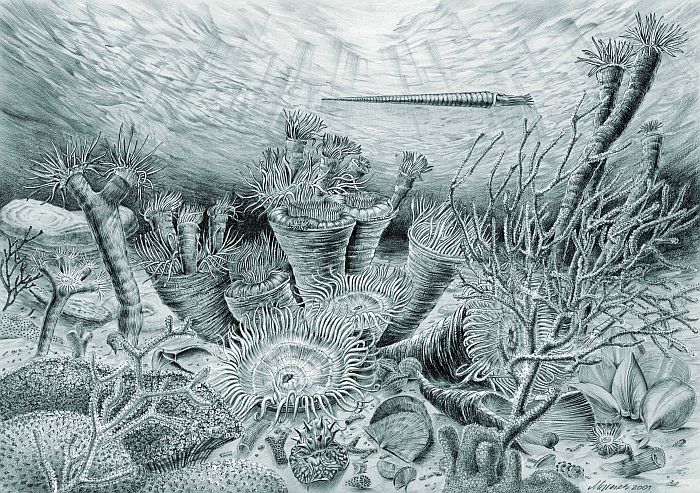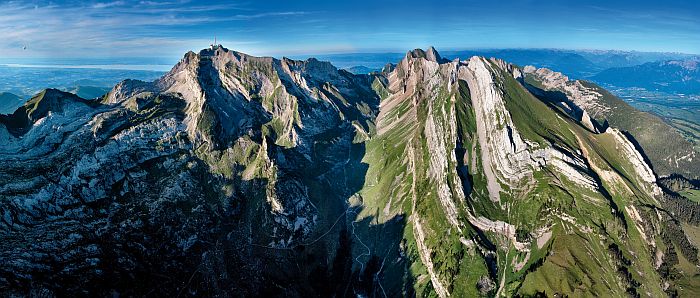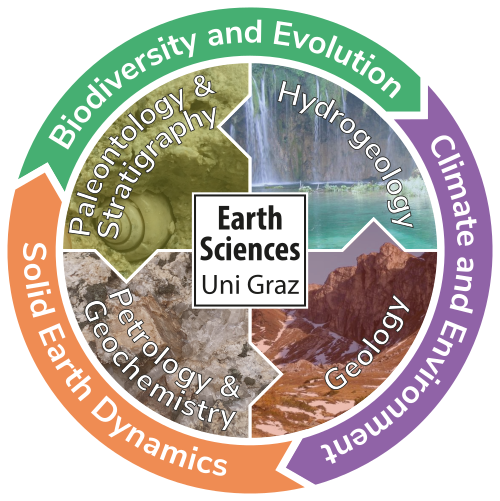What do we do?
Our research covers a broad spectrum of earth sciences, including "Biodiversity and evolution", "climate and environment", and "Dynamics of the solid Earth" are among them.
Our science disciplines are Geology, Petrology and Geochemistry, Hydrogeology, and Paleontology and Stratigraphy.

Biodiversity and evolution
The history of life is represented by macroevolutionary patterns and their preservation in fossil archives. In general, the biosphere is in equilibrium with its (paleo)geographic environment and is thus an important indicator of the habitability of the Earth. The timing and magnitude of fluctuations in biodiversity over geologic time trace extinction and speciation events that are a direct response to environmental and climatic perturbations. Past fluctuations in biodiversity form the basis for assessing current patterns and future trends in global biodiversity and its response to anthropogenic perturbations to global ecosystems.

Climate and environment
Climate and environmental conditions are the result of interactions between the litho-, bio-, hydro- and atmosphere. Recording the timing and rate of past climate and environmental changes, including the hydrological cycle, ecosystems, landscape evolution and energy and nutrient fluxes, is essential for understanding these interactions. Understanding linkages and feedbacks in the geological past helps to derive possible future scenarios in response to anthropogenic impacts on our climate and environment to support the development of mitigation and adaptation strategies in relation to climate change.

Dynamics of the solid Earth
The dynamics of the solid Earth describe the interactions between the deep Earth and the surface of our planet. These dynamics drive the transport of heat and mass in the Earth's interior, buffers the environmental conditions on the surface and makes the Earth habitable. The formation, development and subduction of the lithosphere is an essential part of the plate tectonic cycle. The rates of deformation, metamorphism and magma formation at all scales affect the processes of erosion and topography formation of a constantly changing Earth.
We are currently working on the following core topics* in research and teaching:
- What effects does plate tectonics have on the Earth system and our habitat?
- What are the causes and consequences of topographical changes?
- What does the Earth's past tell us about the consequences of current climate change?
- What processes determine the Earth's water cycle?
- How does biodiversity interact with geological processes?
- How are (bio)geochemical cycles influenced by geological processes?
- How can geoscientific research reduce the risk and consequences of natural hazards?
In all of this, we attach great importance to a holistic understanding of earth system processes: From the processes we reconstruct from the past, we can create models for the future development of planet Earth.
* Based on: National Academies of Sciences, Engineering, and Medicine. 2020. A Vision for NSF Earth Sciences 2020-2030: Earth in Time. Washington, DC: The National Academies Press. doi.org/10.17226/25761.
